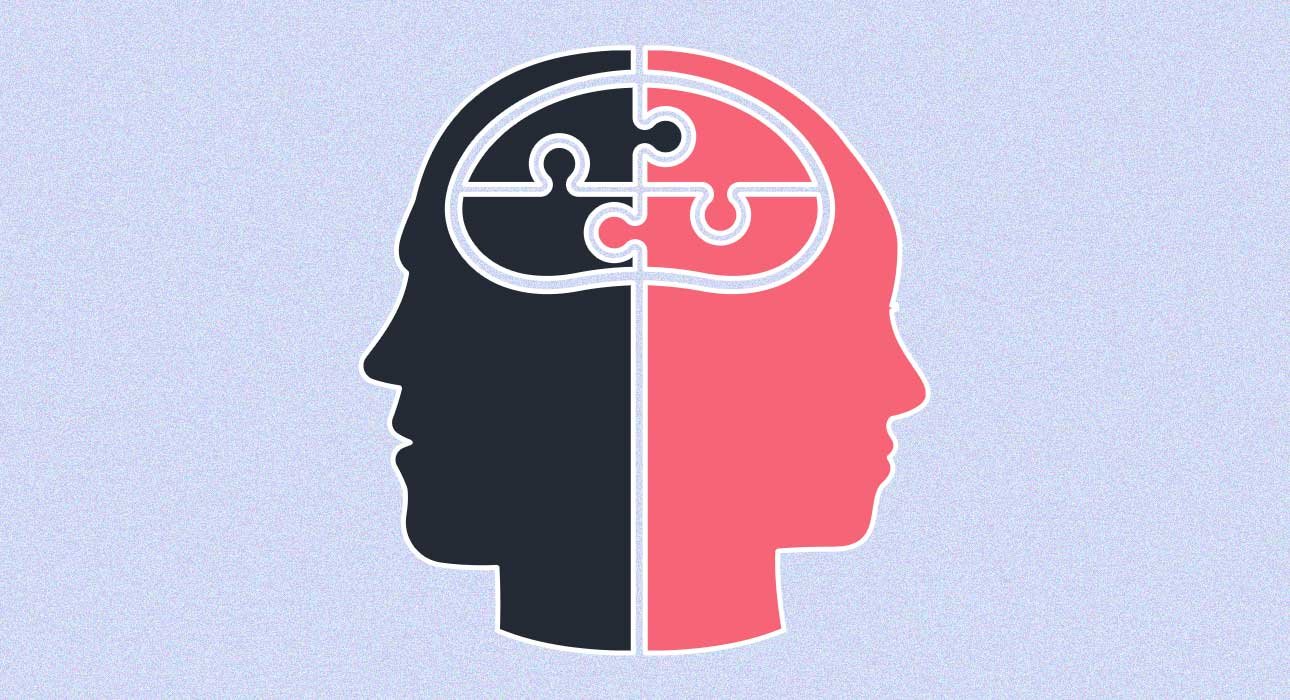Scientists, philosophers and intellectuals have long been captivated by the complex interplay between biology and behaviour. By delving further into the nuances of the human experience, it becomes increasingly clear that our biological disposition greatly manipulates our behaviour. Contrary to popular belief, this notion remained unexplored even in the 1960s, because the behavioural sciences were inclined towards the environmentalistic explanation of human cognition (Plomin et a, 1994).
An example of this was how the mental state of psychotic patients was thought to be caused by the systematic provisions of their environments (Gottesman, 1991). Through extensive analysis, this essay considers that cardinal biological qualities such as neurological circuits, genetic foundations and hormones manifest into our everyday behaviour (McGuffin et al, 1994).
From neural synapses that help elicit responses and the genetic makeup that influences our predilection (Bendesky et al, 2011), our susceptibility to situations appears slightly predetermined. Through research, this essay agrees that biology evidently exists as a silent conductor of human behaviour.
Read More: The Importance of Socialisation in Influencing Human Behaviour
Modern biology elucidates how the human brain is the most complex of biological organs; it not only possesses consciousness but also guides behavioural responses. The structure of the brain, along with its layered cognitive mechanisms, remains a product of genetic fabric and evolutionary consequence (Steffenson, 2007). The integration of both domains leads us to the conjecture that human behaviour is subject to biological intervention.
A majority of this influence can be attributed to genetic framework, the vastness of which spans from behavioural variation to spiritual and political ideology (Koenig et al,2008). In history, understanding the impact of genetics was done by experimenting on mice. This is because humans and mice share significant similarities in brain structure, organisation and the response to pharmacological substances (Laurence, 2003).
Behavioural responses to genetic perturbation may generalise across species, leading to similar reactions to medicines (Nelen, 1993). For instance, the male members of a Dutch family were found to have an X-linked pattern of inheritance for a behavioural disorder characterised by aggression and impulsive sexual approaches to women. This gene was unintentionally engineered in mice that displayed strikingly similar behaviour to the Dutch family. This case study highlights the idea that a mutation to or the presence of an apparent genetic make-up directly influences behaviour (Maeyer et al, 1995).
Read More: Genes and Human Behaviour: How DNA Shapes Emotions, Intelligence, and Resilience
Similarly, twin studies have been a fruitful resource in the understanding of the genetic basis of complex human behaviour. This was proven by a study concerning the cognitive functions and behaviourism (distractibility and speed) related to schizophrenia in monozygotic (MZ) and dizygotic (DZ) twins (Hemsley, 1976). The results indicated that genetic factors directly influenced the severity and functioning of cognition and behaviour amongst schizophrenic patients.
This speculation existed strongly in MZ twins, where the intraclass correlations of scores were all significant and some very high (Austin et al, 1980). In the DZ twins, the scores remained positively correlated, but to a lesser extent (Hemsley, 1978). This case study highlights the similarity in behaviour caused by the relation in genetics, proving its prevalence.
In addition to this, the other kindred branch of behaviour in context to biology is evolution. Studies have elucidated that evolution links incremental adaptation to selection based on behaviours with favourable outcomes that may prove beneficial in the future (Watson et al, 2016). Charles Darwin initiated this conversation by describing the evolutionary aspects of preference and attraction (Jones, 2021) through his theory of “sexual selection” (SS).
Read More: Emotions: Play of Environment and Biology
He laid specific emphasis on a principle of SS termed “Intra-sexual” competition that revealed how successful qualities in the attempt to attract a mate were passed down (Ratterman, 2023) to increase the possibility of mating amidst competition from same-sex organisms (Two male stags locking horns in combat is an example of the same).
However, through evolution, mating behaviour can change through preferences- for example, intrasex competition may progress from physical combat to males competing for position in status or dominance in hierarchy (Buss, 2007). This highlights the ideology that evolution reconditions human behaviour to construct behaviours better suited for development.
Another example of the manifestation of evolution in behaviour can be seen through the roots of violence and aggression in humans (Eron et al, 1989). It was previously believed that aggression existed as an internal phenomenon (The death drive theory by Sigmund Freud) was self-destructive in nature, and caused by suppression (Masi,2015).
Read More: Understanding the Neurobiology of Sleep: Brain Function, Sleep Stages, and Impact on Mental Health
However, studies that have taken a more evolutionary stance elucidate that aggression is not a singular or unified phenomenon; instead, it stands as a group of tactics that emerge under circumstances, proving that aggression develops as a solution to adaptive issues that have persisted, such as hierarchy acquisition, mate retention and resource protection (Buss, 1997). This consequently proves that as adaptation demands changes, evolution triggers sufficient modification in behaviour.
Aside from the evolutionary and genetic aspects of behaviour, there have also been studies that highlight the consequences of brain structure and neural activity on behaviour. Singer et al (2004) conducted a brain imaging study using functional magnetic resonance imaging (fMRI) to investigate the neural functioning behind empathy. Participants were shown images that induced pain that consecutively led to activity in the areas of the brain related to emotional perception, such as the anterior insula. This proves the significant role of the biological basis of empathy and the brain regions responsible.
Read More: How the Amygdala Shapes Our Emotions and Behaviour
Similarly, Hare et al (2009) conducted an fMRI study to dissect the processes involving decision making. It was found that regions such as the prefrontal cortex were activated when it came to decision-making in a social context, suggesting the interference of reward-related behaviour and cognitive processes in shaping social behaviour. These experiments allude to the idea that our brain’s functioning directly manipulates our behaviour.
However, it would be ignorant to proceed further without considering the environmental basis of human behaviour, which goes hand-in-hand with its biological counterpart. This irrefutable dichotomy has long been known as the “nature-nurture debate” that, to date, remains a looming question in every corner of psychological research.
Although unanswered, attempts at resolving the dilemma have left researchers with ample data from both sides of the argument. The question of whether behaviour can be attributed solely to the environment, excluding genetic factors, remains a considerable area of research in the behavioural sciences. There have been multiple studies that emphasise only the environmental explanation of behaviour, for instance, studies on the immediate environment of an individual. Some studies speculate on the role of an individual’s situational and environmental position (Broadman, 2001) and its attribution to poor mental health. Community and societal factors (Robert, 1999), including neighbourhood violence and lack of resources (Wilson, 1996), have been associated with the prevalence of mental health issues in individuals.
A study by Bifulco et al (2002) suggested that unfavourable childhood experiences such as maltreatment (Brody et al, 1990) and dysfunctional families (Forehand, 2002) are positively correlated to depressive and anxious behaviour in children brought up in such households. In contrast to this, some studies take a more central stance and combine gene-environment interaction to explain behaviour. Caspi et al suggested that specific gene variants can cause vulnerability to environmental stressors, and increase the susceptibility of mental health disorders or how gene-environment interplay can govern behaviour (Meaney, 2005).
Read More: The Role of Exercise in Regulating Neurotransmitters and Mental Well-being
Furthermore, the governance of human emotion cannot be attributed just to genetic constructs and evolution. Neurotransmitters play a pivotal role in shaping behaviour by facilitating communication between neurons in the brain (Levite, 2008). This communication involves several neural circuits that underlie different aspects of human behaviour. Studies have used positron emission tomography (PET) scans to analyse the effect of dopamine on behaviour- a neurotransmitter accountable for reward and pleasure (Borelli, 2000). The study observed that lower levels of dopamine were associated with impulsive, risk-taking behaviour (Volkow et al, 2016).
Such empirical evidence has proven the impact neurotransmitters undoubtedly have on behaviour. However, this behavioural reaction is not confined just to dopamine; there have been studies investigating the role of serotonin, the neurotransmitter tasked with the function of mood regulation (Evers, 2006). It was found out through dietary modifications that by temporarily depleting serotonin, individuals were more inclined towards making decisions that benefited themselves rather than others (Crockette et al, 2008).
Read More: The Social Brain: Neuroscience of Human Connection and Mental Health
This suggests that the moderation of serotonin was directly correlated to changes in social behaviour and decision-making. Additionally, studies depict how the neurotransmitter GABA (gamma aminobutyric acid) is responsible for inhibitory processes in the brain (Enna, 1983). It was found that its regulatory levels in the prefrontal cortex were directly associated with impulsive behaviour (Edden et al, 2009). Collectively, this research alludes to the connection between neurotransmitters and behaviour.
In addition to the discernible impact of neurotransmitters, “Hormones” are the other instruments of the human brain that regulate human behaviour. They play a vital role in mood and behaviour alteration by swaying physiological and psychological processes (Berenbaum, 1998). Several case studies have illuminated this ideology and given researchers plenty of insight into the effect of hormones on behaviour.
For instance, studies have proven that the hormonal changes during a woman’s menstrual cycle are directly correlated with the economic or financial decisions they makes. The study implemented the fMRI to conclude that progesterone and estrogen (Chatterson et al, 2005) lead to variation in a woman’s risk aversion depending on how far along they were in their menstrual cycle (Schipper, 2011).
Read More: Why Humans Crave Physical Presence Despite Constant Digital Communication
Other cases emphasised the impact of cortisol, the stress hormone (Sadoul, 2019), on social behaviour. Through the administration of cortisol in patients, it was found that positive interactions increased substantially, proving the consequential effect of cortisol on prosocial behaviour (Schoofs, 2008). Other studies have extensively analysed the effect of oxytocin, the “love hormone” (Carter, 2022), for its influence on social bonding and the development of trust.
Intranasal oxytocin was administered to investigate the effect of trust in economic games. The results indicated an increase in trusting behaviour from participants with higher oxytocin levels, emphasising the role of oxytocin in social interactions (Kosfeld et al, 2005). This accumulated research proves that hormonal fluctuation, whether natural or experimentally induced, causes significant moderation in social behaviour, decision-making and emotional responses.
Inevitably similar, neurotransmitters and hormones are both distinct chemical messengers that play crucial roles in influencing human behaviour. Hormones are chemical substances released by glands into the bloodstream, affecting numerous bodily processes over an extended duration of time (Begum et al, 2018). For example, cortisol is a stressor that can impact mood and cognitive responses to stressors over a period of time (Kirschbaum et al, 1994).
Read More: Hormone Therapy and Mental Health: How HRT Transforms Emotional Well-Being in Trans Men and Women
Conversely, neurotransmitters are released in synaptic gaps and transmit messages between neurons in the brain when stimulated by sensory input or by other neurons (Wurtman, 1983). For example, dopamine is a chemical responsible for reward and motivation that can provoke risk-taking behaviour (Schultz, 2015). While both neurotransmitters and hormones influence behaviour, they vary in terms of timing and scope. Hormones tend to have longer-lasting effects on mood, stress responses and physiological changes, while neurotransmitters exert more immediate consequences on cognitive processing and emotions (Rivera et al, 2021)
Dr Myers, in his book Exploring Psychology, attests to the idea that “Everything psychological is simultaneously biological”. The labyrinthine facets of biology and the brain explored in this essay discredit the seemingly irresolute basis of behaviour. While genetics lay the groundwork, neurotransmitters orchestrate synaptic communication for daily intrinsic communication and responses.
While genetics serves as the building block of human cognition and behaviour, evolution helps deconstruct an idiosyncratic explanation into a more concerted one. Despite the numerous inarguable stances and attempts at deciphering behaviour, biology remains a steadfast conclusion to a sizeable amount. Collectively, these biological components contribute to the intricate mosaic of human behaviour, highlighting the importance of an unprejudiced way of thinking to do justice to the vastness of such a subject.
References +
Ali, S. A., Begum, T., & Reza, F. (2018). Hormonal influences on cognitive function. The Malaysian journal of medical sciences: MJMS, 25(4), 31.
Austin, S. V., & Hemsley, D. R. (1980). Genetic influences on measures of selective attention and speed: A twin study. Behaviour Genetics, 10, 309-315.
Bendesky, A., & Bargmann, C. I. (2011). Genetic contributions to behavioural diversity at the gene–environment interface. Nature Reviews Genetics, 12(12), 809-820.
Bifulco, A., Moran, P. M., Ball, C., Jacobs, C., Baines, R., Bunn, A., & Cavagin, J. (2002). Childhood adversity, parental vulnerability and disorder: Examining inter‐generational transmission of risk. Journal of Child Psychology and Psychiatry, 43(8), 1075-1086.
Boardman, J. D., Finch, B. K., Ellison, C. G., Williams, D. R., & Jackson, J. S. (2001). Neighbourhood disadvantage, stress, and drug use among adults. Journal of health and social Behaviour, 151-165.
Boomsma, D., Busjahn, A., & Peltonen, L. (2002). Classical twin studies and beyond. Nature Reviews Genetics, 3(11), 872-882.
Brunner, H. G., Nelen, M., Breakefield, X. O., Ropers, H. H., & Van Oost, B. A. (1993). Abnormal behaviour associated with a point mutation in the structural gene for monoamine oxidase A. Science, 262(5133), 578-580.
Buss, D. M., & Shackelford, T. K. (1997). Human aggression in an evolutionary psychological perspective. Clinical psychology review, 17(6), 605-619.
Buss, D. M. (2007). The evolution of human mating. Acta Psychologica Sinica, 39(3), 502-512.
Carter, C. S. (2022). Oxytocin and love: myths, metaphors and mysteries. Comprehensive Psychoneuroendocrinology, 9, 100107.
Caspi, A., Sugden, K., Moffitt, T. E., Taylor, A., Craig, I. W., Harrington, H., … & Poulton, R. (2003). Influence of life stress on depression: moderation by a polymorphism in the 5-HTT gene. Science, 301(5631), 386-389.
Crockett, M. J., Clark, L., Tabibnia, G., Lieberman, M. D., & Robbins, T. W. (2008). Serotonin modulates behavioural reactions to unfairness. Science, 320(5884), 1739-1739.
Edden, R. A., Crocetti, D., Zhu, H., Gilbert, D. L., & Mostofsky, S. H. (2012). Reduced GABA concentration in attention-deficit/hyperactivity disorder. Archives of general psychiatry, 69(7), 750-753.
Eron, L. D. (1982). Parent–child interaction, television violence, and the aggression of children. American psychologist, 37(2), 197.
Evers, E. A., Van der Veen, F. M., Van Deursen, J. A., Schmitt, J. A., Deutz, N. E., & Jolles, J. (2006). The effect of acute tryptophan depletion on the BOLD response during performance monitoring and response inhibition in healthy male volunteers. Psychopharmacology, 187, 200-208.
Forehand, R., Thomas, A. M., Wierson, M., Brody, G., & Fauber, R. (1990). Role of maternal functioning and parenting skills in adolescent functioning following parental divorce. Journal of Abnormal Psychology, 99(3), 278.
Forehand, R., Wierson, M., Thomas, A. M., Armistead, L., Kempton, T., & Neighbours, B. (1991). The role of family stressors and parent relationships on adolescent functioning. Journal of the American Academy of Child & Adolescent Psychiatry, 30(2), 316-322.
Fritzsche, K., Henshaw, J. M., Johnson, B. D., & Jones, A. G. (2021). The 150th anniversary of The Descent of Man: Darwin and the impact of sex-role reversal on sexual selection research. Biological Journal of the Linnean Society, 134(3), 525-540.
Jones, A. G., & Ratterman, N. L. (2009). Mate choice and sexual selection: what have we learned since Darwin?. Proceedings of the National Academy of Sciences, 106(supplement_1), 10001-10008.
Jones, A. G., & Ratterman, N. L. (2009). Mate choice and sexual selection: what have we learned since Darwin?. Proceedings of the National Academy of Sciences, 106(supplement_1), 10001-10008.
Julius, W. W. (1987). The truly disadvantaged: The inner city, the underclass, and public policy.
Kirschbaum, C., & Hellhammer, D. H. (1994). Salivary cortisol in psychoneuroendocrine research: recent developments and applications. Psychoneuroendocrinology, 19(4), 313-333.
Kosfeld, M., Heinrichs, M., Zak, P. J., Fischbacher, U., & Fehr, E. (2005). Oxytocin increases trust in humans. Nature, 435(7042), 673-676.
LeBlanc, S. A. (2016). Forager warfare and our evolutionary past. Violence and warfare among hunter-gatherers, 26-46.
Lesch, K. P., & Merschdorf, U. (2000). Impulsivity, aggression, and serotonin: a molecular psychobiological perspective. Behavioural Sciences & the law, 18(5), 581-604.
Levite, M. (2008). Neurotransmitters activate T-cells and elicit crucial functions via neurotransmitter receptors. Current opinion in pharmacology, 8(4), 460-471.
Meaney, M. J., & Szyf, M. (2022). Environmental programming of stress responses through DNA methylation: life at the interface between a dynamic environment and a fixed genome. Dialogues in clinical neuroscience.
Myers, D. G. (2004). Exploring psychology. Macmillan.
Plomin, R., Owen, M. J., & McGuffin, P. (1994). The genetic basis of complex human behaviours. Science, 264(5166), 1733-1739.
Rilling, J. K., Glenn, A. L., Jairam, M. R., Pagnoni, G., Goldsmith, D. R., Elfenbein, H. A., & Lilienfeld, S. O. (2007). Neural correlates of social cooperation and non-cooperation as a function of psychopathy. Biological psychiatry, 61(11), 1260-1271.
Roelofs, K., Elzinga, B. M., & Rotteveel, M. (2005). The effects of stress-induced cortisol responses on approach–avoidance behaviour. Psychoneuroendocrinology, 30(7), 665-677.
Sampson, R. J., Raudenbush, S. W., & Earls, F. (1997). Neighborhoods and violent crime: A multilevel study of collective efficacy. Science, 277(5328), 918-924.
Sarmiento Rivera, L. F., & Gouveia, A. (2021). Neurotransmitters and Hormones in Human Decision-Making. Psychiatry and Neuroscience Update: From Epistemology to Clinical Psychiatry–Vol. IV, 149-167.
Schultz, W. (2015). Neuronal reward and decision signals: from theories to data. Physiological reviews, 95(3), 853-951.
Singer, T., Seymour, B., O’doherty, J., Kaube, H., Dolan, R. J., & Frith, C. D. (2004). Empathy for pain involves the affective but not sensory components of pain. Science, 303(5661), 1157-1162.
Tecott, L. H. (2003). The genes and brains of mice and men. American Journal of Psychiatry, 160(4), 646-656.
Vallone, D., Picetti, R., & Borrelli, E. (2000). Structure and function of dopamine receptors. Neuroscience & biobehavioral reviews, 24(1), 125-132.
Volkow, N. D., Fowler, J. S., Wang, G. J., Hitzemann, R., Logan, J., Schlyer, D. J., … & Wolf, A. P. (1993). Decreased dopamine D2 receptor availability is associated with reduced frontal metabolism in cocaine abusers. Synapse, 14(2), 169-177.
Watson, R. A., & Szathmáry, E. (2016). How can evolution learn?. Trends in ecology & evolution, 31(2), 147-157.
Wurtman, R. J. (1983, January). Food consumption, neurotransmitter synthesis, and human behaviour. In Nutritional Adequacy, Nutrient Availability and Needs: Nestlé Nutrition Research Symposium, Vevey, September 14–15, 1982 (pp. 356-369). Basel: Birkhäuser Basel.













Leave feedback about this